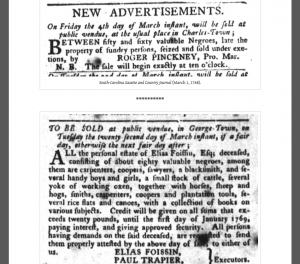What is this digital public history exhibit about?
The Adverts 250 Project is a digital exhibit that is about advertising in the 18th century. Everyday there are new posts on the site that were published 250 years ago in colonial newspapers. Below the article that they post, there is a written explanation that goes further in depth to provide you with more knowledge on the piece.
Who made it, and why?
The exhibit is managed by man named Carl Robert Keyes, who was a professor at Assumption College in Massachusetts. Some students from the college have also added to the site. The exhibit was created to explore the history of advertising during the 18th century in great detail. It also serves as a great plane for comparison for us. We can look at what is being advertised in this day and time, compared to what was being advertised on this exact day many years ago.
What kinds of primary sources did you find?
The primary sources that I found were all of the newspaper articles/ advertisements, since that is the sites main focus after all. Seeing the slave advertisements, like the one I’ve inserted below, really hit home for me. It’s very hard and disturbing to think that people used to treat other human beings as property.

Overall, what did the digital public history exhibit do well?
I think that the digital public history exhibit did a good job with organizing the site. Articles can be accessed by date, which I was a big fan of. This would make it easy to see articles and advertisements from a certain week in history, if you were doing research on a certain time perhaps. I also really like how the actual articles are scanned onto the site, because even though you can’t hold then physically, at least you get some kind of feel for the article itself. I think that the exhibit did a good job doing what it was meant to do.
Overall, what could be improved in the digital public history exhibit?
Yes, the site was organized, but it was rather dull. Not that the website should be super upbeat or radiating sunshine, since a lot of it is about slavery, but the gray background just really wasn’t doing it for me. That would probably be the only thing I would fix or think that they could do better, but thats just a personal preference. Overall, I don’t think much could be improved.
Thinking about digital humanities more broadly, what is gained, and what is lost, when representing the past through this digital public history exhibit?
My biggest thing with all of the digital public history exhibits that we have viewed is that yes, they are great tools. They are great tools because you can have many resources at the click of a button right at your fingertips, and don’t have to drive all the way to an actual exhibit to obtain this information. However, I am really not a fan of them. By viewing things on line, we lose the emotional aspect of what they truly are. Seeing, or even possibly holding an advertisement for slaves being sold would take so much more of an emotional toll than just seeing a scan of it online.
-Megan Bender
